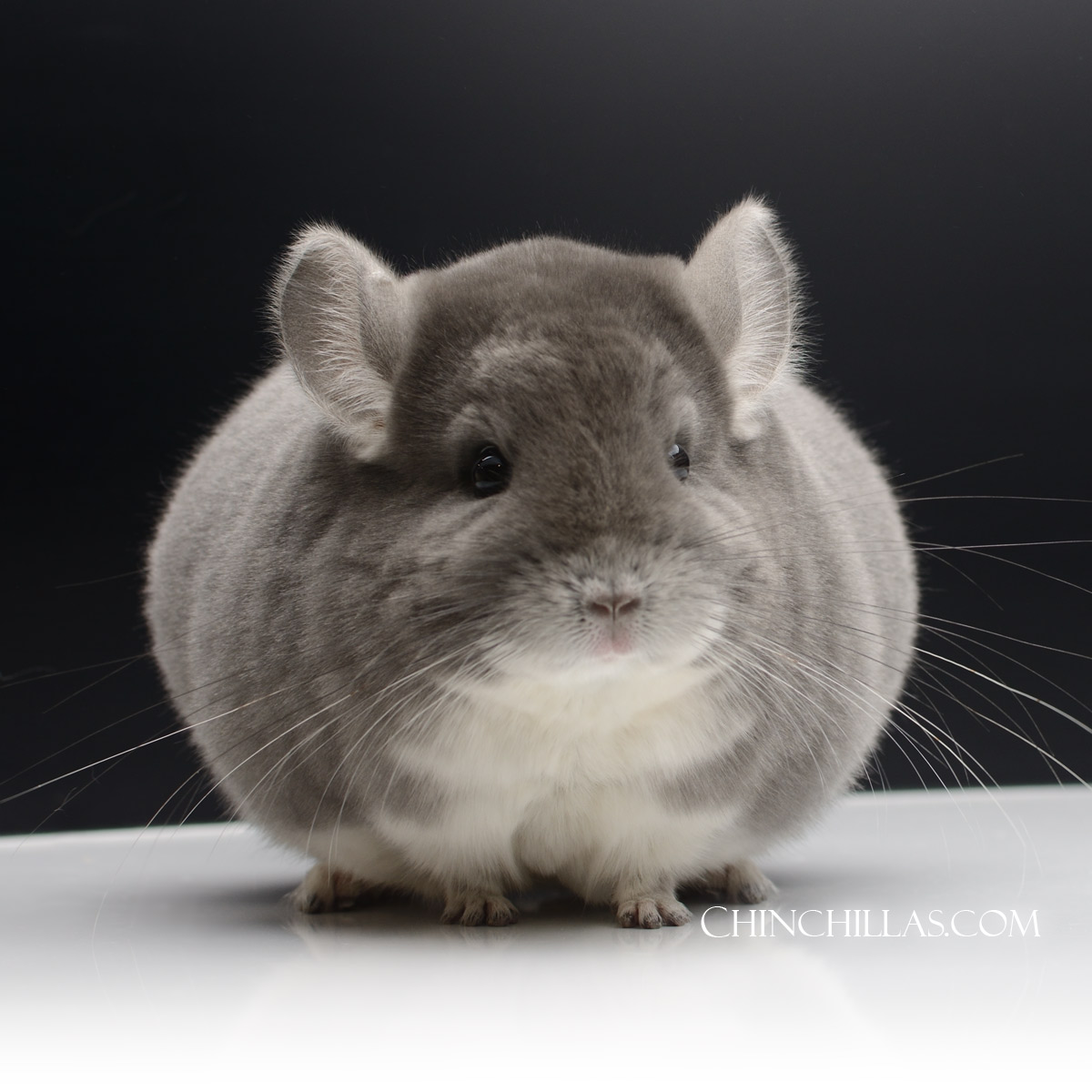
Realizing maximum genetic potential in the chinchilla is an exercise in form-to-function, requiring talent, experience, patience, and an eye for the artistic. A bit of luck also plays a role! However, there are limitations to what the animal can achieve genetically, without the right environment.
 The violet chinchilla pictured weighs an impressive 1023 grams – even more notable for a recessive color mutation male. However, his condition is reflective of both his genetic potential, and optimal living conditions - which include an exercise wheel, natural daylight, fresh air, and high quality feed.
The violet chinchilla pictured weighs an impressive 1023 grams – even more notable for a recessive color mutation male. However, his condition is reflective of both his genetic potential, and optimal living conditions - which include an exercise wheel, natural daylight, fresh air, and high quality feed.
It is not uncommon to find a tremendously large chinchilla, living in sub-standard conditions. In this case, the size is often attributable to obesity and the inability to exercise, which have a significant negative influence on the animal’s health, as well as on its reproductive capacity.
This Violet Male (23163) is a former show champion, with universal aesthetic appeal. Along with ideal color, fur quality, size, and conformation, he also has a beautiful head, small ears, and a kind disposition. He is a credit to his breeder.
23163 has recently been paired with an outstanding violet female, and one 2025 pair-bred kit will be offered for sale - inquires welcome.
* a note of caution - chinchillas can die at temperatures above 75F / 23C. They should never be subjected to daylight or sunlight from which they cannot escape. Doing so could put them at risk of death.